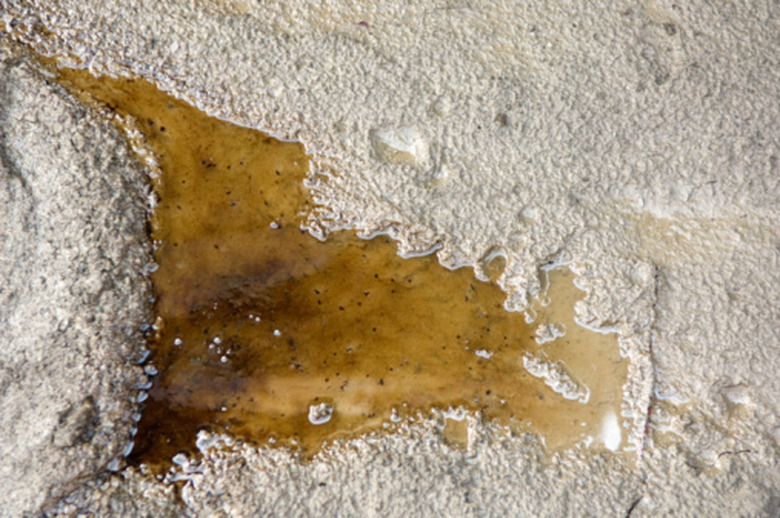Types Of Oil Pollution
Oil pollution is a serious problem, especially oil spills in the world's oceans. Oil pollution can kill animals and wildlife, sometimes wiping out entire ecosystems before a cleanup starts. The different types of pollution have varying risks of danger to animals and humans, but the pollution always has danger associated with it. There are a few types of oil pollution, which vary depending on the kind of oil.
Oil Spills
Oil Spills
Among the most serious types of oil pollution is an oil spill. Oil spills occur for various reasons, which range from an oil ship getting damaged or similar transport issues to problems or malfunctions of equipment at oil refineries. Transportation of oil is when spills are the most likely to occur. For example, the oil spill on April 20, 2010, which spilled oil into the Gulf of Mexico occurred due to an explosion. "The Huffington Post" reported that around 205 million gallons of oil were spilled into the ocean, resulting in oil damage to beaches, the marine environments and the livelihood of fishermen.
Urban Runoff
Urban Runoff
Urban locations exhibit oil buildup on roads from vehicles. When it rains or snow melts, the oil is pushed from the roads into sewer systems and runs off into water sources. Oil gets onto the roads though a few different means. The U.S. Environmental Protection Agency (EPA) states that leaks from vehicles, spills at fuel stations and improperly discarded oil are among the main causes of runoff oil pollution. The oil floats on the water during rain or snow melt and is pushed out of a city to pollute water and natural environments in rural areas.
Atmospheric Fallout
Atmospheric Fallout
Atmospheric fallout is the oil that pollutes the air from vehicles and planes. This oil eventually starts to fall out of the air and into oceans or onto land masses. Fallout can be heavy or light depending on the location and the amount of pollution in the air. For example, when cars run, some of the oil burned to produce energy goes into the air. This oil either travels on the air or falls out of the air. When it rains or snows, the oil is knocked out of the air and falls to create pollution in water or land, depending on the location.
Natural Seeps
Natural Seeps
Natural seeps consist of the oil that pollutes the environment naturally. The oil oozes up out of the ground and pollutes the area around it. Perhaps one of the most famous natural seeps is the La Brea Tar Pits in California, which are a seep of oil and gas forming tar. Natural seeps are unavoidable pollution as the earth pushes oil up.
Cite This Article
MLA
MayankJ, . "Types Of Oil Pollution" sciencing.com, https://www.sciencing.com/types-oil-pollution-8084758/. 22 November 2019.
APA
MayankJ, . (2019, November 22). Types Of Oil Pollution. sciencing.com. Retrieved from https://www.sciencing.com/types-oil-pollution-8084758/
Chicago
MayankJ, . Types Of Oil Pollution last modified March 24, 2022. https://www.sciencing.com/types-oil-pollution-8084758/
